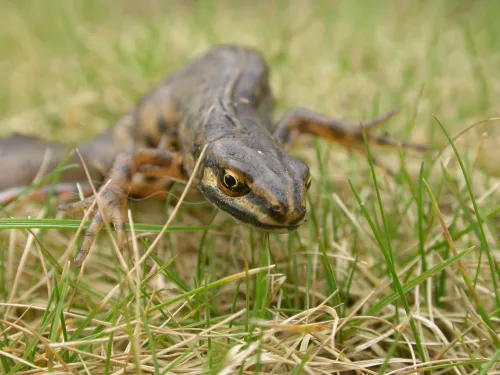
Smooth newt
You are likely to spot the smooth newt in your garden or local pond. It breeds in water in summer and spends the rest of the year in grassland and woodland, hibernating over winter.
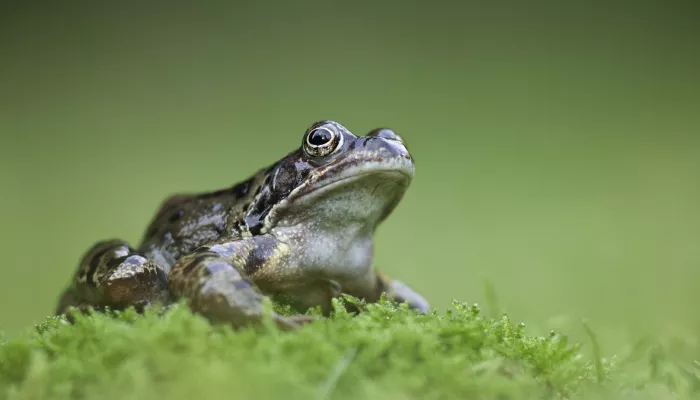
Meet the fascinating array of Kent's amphibian world. Amphibians are small vertebrates that need water, or a moist environment, to survive.

You are likely to spot the smooth newt in your garden or local pond. It breeds in water in summer and spends the rest of the year in grassland and woodland, hibernating over winter.
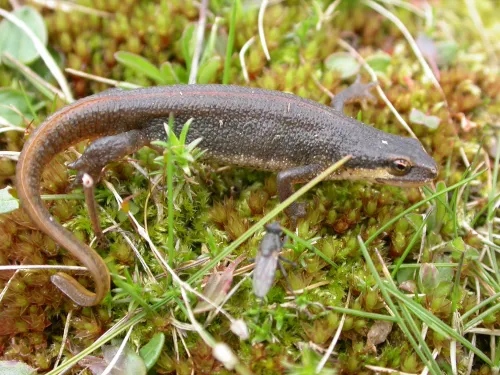
The palmate newt looks similar to the smooth newt, but favours shallow pools on acidic soils like heathlands. During the breeding season, males grow distinctive black webbing on their hind feet.
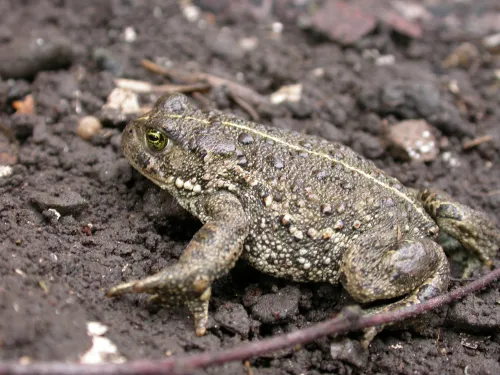
The rare natterjack toad is found at just a few coastal locations, where it prefers shallow pools on sand dunes, heaths and marshes.
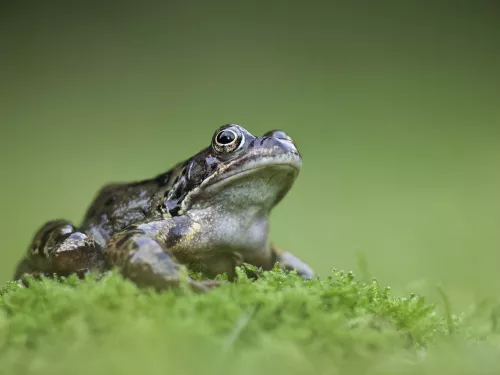
Our most well-known amphibian, the common frog is a regular visitor to garden ponds across the country, where they feast on slugs and snails. In winter, they hibernate in pond mud or under log piles.
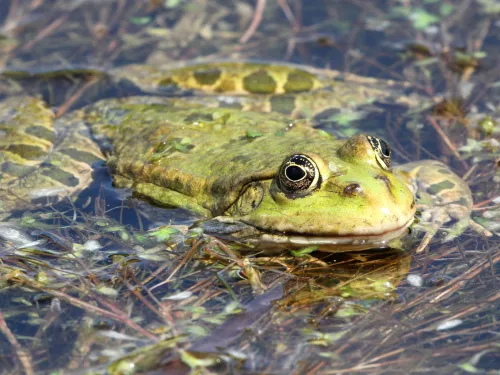
Europe's largest frog is not naturally found in the UK, but was introduced to Kent and has spread throughout the southeast.
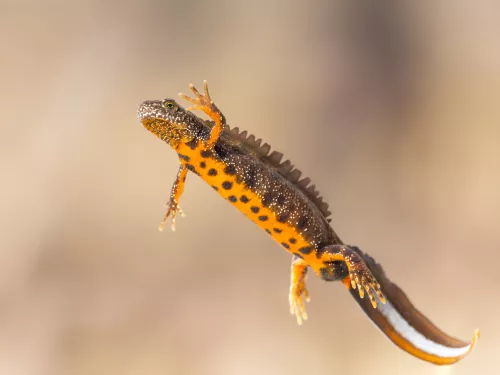
With its prominent, wavy crest, the great crested newt, also known as the 'warty newt', looks like a mini dinosaur! This protected species favours clean ponds during the breeding season.
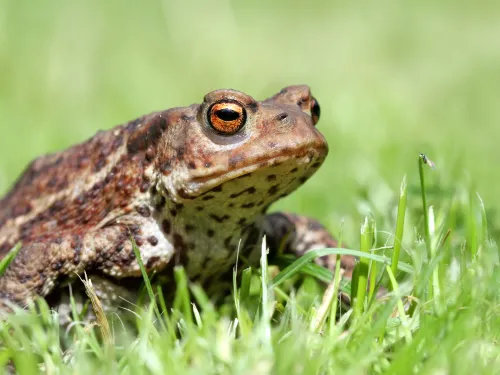
Despite its warts and ancient associations with witches, the common toad is a gardener's friend, sucking up slugs and snails. It is famous for migrating en masse to its breeding ponds.